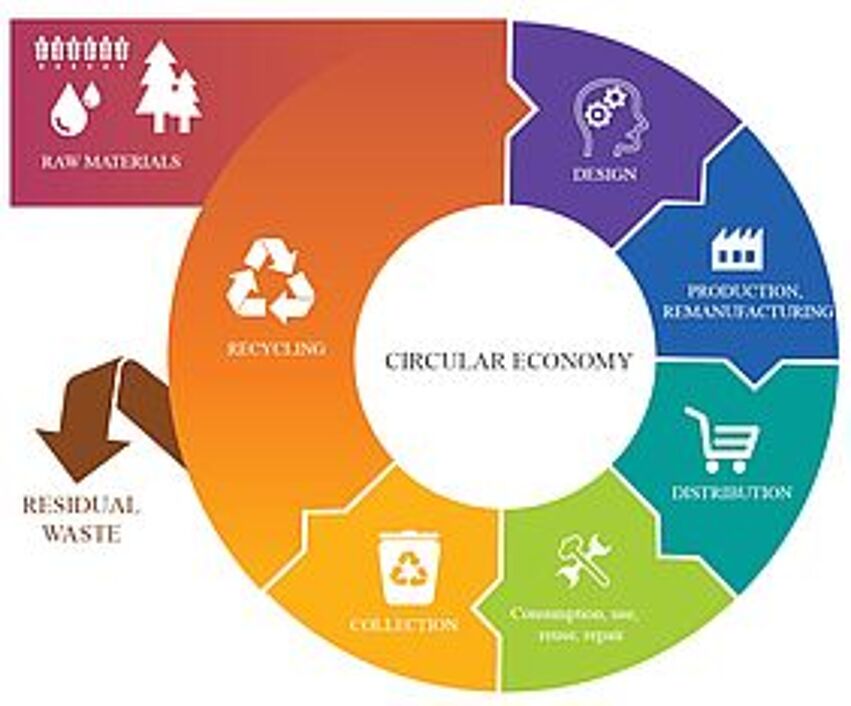The Workshop Circular Economy marked the kick-off of an event series that natureplus is planning to focus on increasing the circularity and by this resource efficiency of building products. With a mixture of presentations and discussions among participants this first event set the ground by creating a common understanding of the current status and the challenges of a circular economy in the building sector.
Urban Mining Index
First, Dr. Anja Rosen from University of Wuppertal presented the “Urban Mining Index” (UMI) – a tool that she has developed herself as part of her doctoral thesis. The UMI can be used to evaluate the closed loop potential of materials along the three stages (pre-use, use, post-use) they go through. Calculating all incoming materials and all resulting valuable and waste materials and evaluating the quality levels of their subsequent use then leads to the circular materials’ share in the entirety of materials used in a building’s life cycle: The Urban Mining Indicator. As a practical example Dr. Rosen presented the redesign of the Korbach town hall. As part of this project the demolished town hall was used as an urban mine while at the same time the new town hall construction was optimized in terms of circularity by using the Urban Mining Indicator. The mineral demolition materials for example were recycled locally and could then be directly reintegrated in the concrete for the new building.
Circular façade system
Following this presentation, Dr. Eike Messow, Head of Sustainability at Sto SE & Co KGaA, shared insights into circularity efforts that Sto is driving as an international manufacturer of products and systems for coating building. In addition to realizing circularity in their own company buildings and developing an award-winning separable, easy to dismantle façade system, Dr. Messow pointed out the importance of focusing on existing buildings. To save resources and also to preserve the beauty and design of the existing architecture the use phase of buildings should be extended, he said. Hence, looking at the current thermal insulation of existing buildings and taking those to the next level is a focus for Sto. In some cases, Messow admitted, however deconstruction is inevitable. Especially the deconstruction of external wall insulation system however brings up many challenges. EWIS are often dismantled in mixed waste fraction while the goal should be to dismantle it into fine fraction, insulation material, coat and mesh. As this process is still very expensive and often not saleable yet, Sto is constantly driving research and development activities looking into additional ways of increasing circularity for their products.
Concular platform
Dominik Campanella, co-founder of the platform restado and the start-up Concular, followed Dr. Messow and presented how Concular is very practically bringing a circular economy in the construction sector to life. The platform that Concular offers matches buyers’ demand for construction material with suppliers’ circular materials. Material demands from construction projects can be uploaded onto the platform, while circular materials from demolition projects can be recorded using a digital material passport. With these efforts, Campanella and his team are trying to support the reuse of as much materials and products as possible instead of chosing new materials. In Berlin for example, Concular has digitized the 40.000 m2 of the historic building Karstadt Hermannsplatz which is currently being renovated. The components are now being used for the new construction or other projects in Berlin.
Timber usage cascade
To conclude the presentations Andrea Klinge from ZRS Architekten in Berlin shared the efforts that she and her team driving in realizing a circular economy from an architectural perspective. She introduced the project RE4 EU for Circular Construction - a collaborative research project of 13 partner institutions from science and industry funded under the European Union’s Horizon 2020 research and innovation programme. The main purpose of the project was to develop a prefabricated energy-efficient building concept that can be easily assembled and disassembled for future reuse, containing up to 65% in weight of recycled materials from construction and demolition waste. As an exemplary concept, Klinge explained how the usage of timber can be cascaded, from load bearing in the 1st stage, as cladding materials in the 2nd phase, in chipboard panels in the 3rd phase and as fibrous insulation in the 4th phase. Another practical example she showed was a workshop building of the Konrad Zuse school in Berlin. For this workshop building, a 2 storey timber construction with reversible support structure, ZRS used for example reversible connections for columns and walls and joints, that allow quick reactions to changing space requirements and environmental influences.
Breakout Sessions
After the presentations the participants joined three breakout sessions and discussed virtually the challenges they see in realizing a circular economy in the construction sector. These very lively and productive discussions showed that the challenges range from
- technical challenges, like rethinking the design of building products to
- legal challenges, like the need for further specifications of the criteria secondary materials need to meet to
- organizational and logistical challenges, like the distance between manufacturers and recycling facilities
- to economic challenges like the high costs for recycling.
Finally, also possible solutions were discussed such as a reward for the use of secondary materials. Regarding natureplus activities, participants especially highlighted the need to include circularity criteria in more detail in the natureplus ecolabel, as well as the networking opportunities natureplus offers to get stakeholders in this topic connected. These results are now being used as a starting point for the upcoming circular economy events and further activities, that natureplus is currently planning. Let us know if your’re interested in joining, we will keep you informed.
*This event was part of the natureplus project "Baustoffwende" and financially supported by the Federal Environment Agency (UBA) and the Federal Ministry for the Environment, Nature Conservation and Nuclear Safety.


